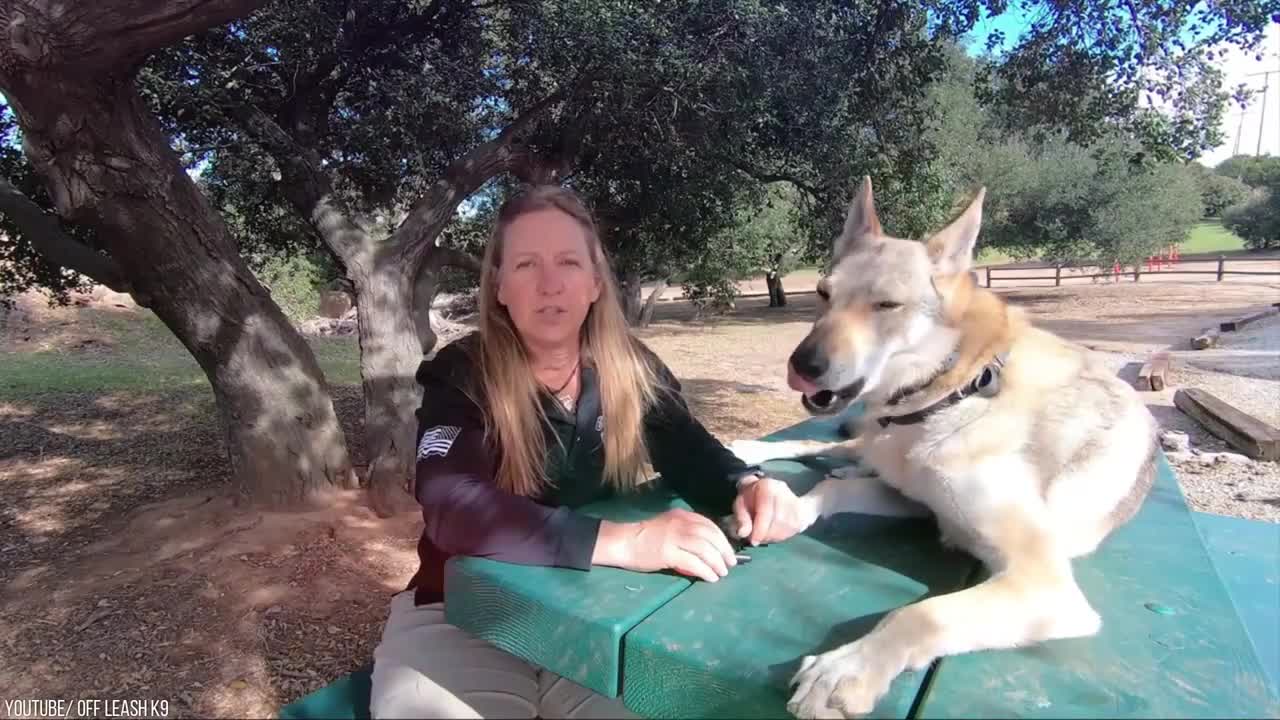Premium Only Content

The most dangerous dogs in the world
The Fila Brasileiro (Portuguese pronunciation: , or Brazilian Mastiff, is a large working breed of dog developed in Brazil.[1] It is known for its superb tracking ability, aggressiveness and an unforgiving, impetuous temperament. Rather than attacking its prey, the Fila traps it and waits for the hunter to arrive. Owing to these qualities, the Fila Brasileiro is used as a guard dog, and as a dog fighting dog, as a cattle dog for livestock and as a hunting dog for tracking and controlling large game. When slavery was legal in Brazil in the 18th century, the Fila Brasileiro was used to return fugitive slaves to their masters.[2]
The Pekingese (also spelled Pekinese) is a breed of toy dog, originating in China. The breed was favored by royalty of the Chinese Imperial court as both a lap dog and companion dog, and its name refers to the city of Peking (Beijing) where the Forbidden City is located. The breed has several characteristics and health issues related to its unique appearance. Because of its desirable characteristics, the Pekingese has been part of the development of designer crossbreeds, such as the Peekapoo (crossed with a poodle) and Peke-a-tese (crossed with a Maltese).
Dogs evolved from wolves through a centuries-long process of domestication. Domestication is the process by which a wild animal adapts to living with humans by being selectively bred by humans over thousands of hybrid at the W.O.L.F. Sanctuary in Colorado.
American Staffordshire Terriers are muscular, giving the impression not only of great strength for their size but also of grace and agility. Their gait is springy. Their low center of gravity help them to easily stay on their feet, however they are also quite nimble. The coat is short, close, and glossy.
The Cane Corso is a working dog who absolutely loves having a job to do. This old Italian dog breed was developed to guard property and hunt big game such as wild boar.
Although these are purebred dogs, you may find them in the care of rescue groups or shelters. Remember to adopt! Don’t shop if you want to bring one of these dogs home.
10 Interesting Facts About Earth's Oceans
Advertisement
Cane Corsos are powerful and athletic, best suited to experienced pet parents who have large, securely fenced yards. They’ll definitely need their humans to give them a task; otherwise, they may find their own ways to reduce boredom — probably with destructive behavior. If you can give your dog plenty of space, exercise, and training, then this may be the breed for you!
It’s important to remember that dogs of any breed can suffer from health issues throughout their lives. A good pet insurance plan can help you prepare to give your dog the care they need at any age. Lemonade Pet Insurance is customizable, starting at only $10 a month, and can help cover your Corso for up to 90% of vet bills in case of an unexpected illness or accident.
Click here to get a pet insurance quote for your Cane Corso!
See below for all dog breed traits and facts about Cane Corsos!
Cane Corso Dog Breed Pictures
Cane Corso Dog Breed Information, Pictures, Characteristics & Facts
Cane Corso Dog Breed PictureCane Corso Dog Breed PictureCane Corso Dog Breed Picture
Breed Characteristics:
Adaptability
Adapts Well To Apartment Living
1
Good For Novice Owners
1
Sensitivity Level
3
Tolerates Being Alone
1
Tolerates Cold Weather
3
Tolerates Hot Weather
4
All Around Friendliness
Affectionate With Family
4
Kid-Friendly
2
Dog Friendly
3
Friendly Toward Strangers
2
Health And Grooming Needs
Amount Of Shedding
3
Drooling Potential
4
Easy To Groom
5
General Health
3
Potential For Weight Gain
Vital Stats:
Dog Breed Group:
Working Dogs
Height:
1 foot, 11 inches to 2 feet, 3 inches tall at the shoulder
Weight:
90 to 120 pounds
Life Span:
10 to 12 years
More About This Breed
The Cane Corso (Corso for short) is a serious dog breed for a person who is serious about having a dog as a companion and who can provide him with the firm and loving guidance he needs to become a great dog. He is a family-only dog. Don’t expect him to buddy up with everyone he meets: He has no interest in people or other animals outside his family, but those within the family will have his undivided loyalty and protection.
Give this dog a job. He’s unwilling to just lie around all day and will find his own “work” to do if you don’t provide it: usually running the fence and barking at passersby, digging holes to China, or chewing up your furniture. If you have a farm or ranch, he will help you with the livestock; otherwise, get him involved in a dog sport such as agility, dock diving, nose work, obedience, or tracking.
Highlights
The Corso’s short coat comes in black, light, and dark shades of gray; light and dark shades of fawn; and red. Any of these colors may have a brindle pattern: irregular streaks of light and dark color.
Solid fawn and red Corsos may have a black or gray mask.
The Corso’s ears may be cropped or uncropped.
The Corso is a working dog who needs lots of mental and physical stimulation.
Corsos are not demonstrative, but they enjoy “talking” to their people with “woo woo woo” sounds, snorts, and other verbalizations.
The Corso is not a good “first dog.” He requires plenty of socialization, training, and exercise to be a good companion.
History
The Corso is one of many Mastiff-type dogs. This one was developed in Italy and is said to descend from Roman war dogs. He is more lightly built than his cousin, the Neapolitan Mastiff, and was bred to hunt game, guard property, and be an all-around farm hand. Their work included rounding up pigs or cattle and helping to drive them to market.
The word “cane,” of course, is Latin for dog and derives from the word “canis.” The word “corso” may come from “cohors,” meaning bodyguard, or from “corsus,” an old Italian word meaning sturdy or robust.
The breed declined as farming became more mechanized and came near to extinction, but starting in the 1970s dog fanciers worked to rebuild the Corso. The Society Amatori Cane Corso was formed in 1983, and the Federation Cynologique Internationale recognized the breed in 1996.
A man named Michael Sottile imported the first litter of Corsos to the United States in 1988, followed by a second litter in 1989. The International Cane Corso Association was formed in 1993. Eventually, the breed club sought recognition from the American Kennel Club, which was granted in 2010. The breed is now governed by the Cane Corso Association of America.
Size
The Corso is a large, muscular dog. Males stand 25 to 27.5 inches at the withers; females 23.5 to 26 inches. Weight is proportionate to height and typically ranges from 90 to 120 pounds.
Personality
The Corso’s history describes him as having a “vigorous temperament, ready to meet any challenge.” That type of temperament can be a double-edged sword. With a confident, consistent owner who provides good leadership and prevents the dog from roaming, the Corso can be an excellent family dog who is never inappropriately aggressive, but in the wrong hands he can become aggressive and be a danger to the public. In July, two Corsos were in the news after they attacked and killed a jogger.
The ideal Corso is docile and affectionate toward his family, including children. To get him to that point requires socialization and training from an early age. This dog will not do well in a home with anyone who is afraid of or dislikes dogs or is unable to manage a large dog.
The Corso is highly intelligent. Combine that with his bossy nature, and it’s easy to see how he could come to dominate the household without firm leadership and boundaries. He will test you to see how far he can go. It’s important to let him know from the start what the rules are and to ensure that all family members understand the rules as well. Institute a “nothing in life is free” policy by requiring him to perform a command such as “Sit” or “Down” before rewarding him with a meal, treats, or a toy.
Firm leadership does not mean hitting the dog — ever. That not only sends the wrong message but can also be dangerous with a large, powerful dog. The sensitive Corso understands tone of voice and responds well to praise and rewards when he has done something you like as well as to firm, rapid corrections and consistent enforcement of rules when you don’t like what he’s doing. Being calm, quiet, and self-assured will get you a lot farther with this dog than angry bluster. Consistency will allow him to relax and know you are in charge.
Help the young Corso develop confidence by letting him spend time alone. This can be outdoors in a confined area such as a yard or kennel or in his crate while you are busy around the house and can’t supervise. Being alone for varying periods teaches him he’s all right on his own and you always come back.
Like every dog, the Corso needs early socialization — exposure to many different people, sights, sounds, and experiences — ideally before he is four months old. Socialization helps to ensure your Corso puppy grows up to be a well-rounded dog, unafraid of strangers, children, other animals, or being left alone when necessary. Without a lot of experience of the world, he can easily become fearful or aggressive. The more you socialize him, the better able he will be to determine what’s normal behavior and what actions require him to respond in a protective way.
According to the Italian breed standard, the Corso should be indifferent when approached and should only react when a real threat is present. The Corso is a working breed and is required to function under high levels of stress. A Corso who cannot maintain its dictated temperament under stressful situations is one with incorrect temperament for the breed.
Health
Corsos are generally healthy, but like all breeds, they’re prone to certain health conditions. Not all Corsos will get any or all of these diseases, but it’s important to be aware of them if you’re considering this breed.
The Corso can be prone to hip dysplasia; eyelid abnormalities such as entropion, ectropion, and cherry eye; demodectic mange (which can be heritable); and gastric torsion, also known as bloat.
Expect breeders to have up-to-date health clearances certifying that a puppy’s parents are free of eye disease and hip dysplasia. Clearances should be in the form of an eye exam by a board-certified veterinary ophthalmologist with the results registered with the Orthopedic Foundation for Animals and an OFA or Pennhip evaluation of the hips. You can confirm health clearances by checking the website of the Canine Health Information Center. You should also ask if any of the breeder’s dogs have ever suffered bloat or mange.
Regardless of how healthy your dog is when you first bring them home, you should prepare for any issues that may come up throughout their life. A pet insurance plan can help you stay ready for any of your dog's veterinary needs. For peace of mind, get your Cane Corso insured by Lemonade Pet Insurance so your pup’s treatments can be covered up to 90% in case of a disease or unexpected condition. Lemonade covers common accidents, along with wellness benefits like vaccinations, if you opt for their preventative care package.
Get a quote now for Lemonade Pet Insurance!
Care
This working breed needs plenty of physical activity to stay in shape. Plan on taking him for a brisk walk or jog of at least a mile, morning and evening, every day. If you like to bicycle, get an attachment that will allow him to run alongside you.
Go easy on puppies. Their musculoskeletal system isn’t fully developed until they are about 18 months old, so while they need more walks to help burn off their puppy energy, those walks should be shorter and slower.
For mental stimulation, provide this dog with a job. Good employment for a Corso includes herding livestock (your own or a trainer’s), learning tricks, practicing obedience skills, or being involved in a dog sport. Spend at least 20 minutes a day on these types of activities. It’s okay to break it up: for instance, 10 minutes in the morning and 10 minutes in the evening.
Never allow a Corso to run loose. A solid, secure fence is a must. An electronic fence will not prevent him from leaving your property if he chooses to, and it won’t protect your neighbor’s dog or cat if he wanders into your yard.
Finally, be prepared for the amount of care and large bills that can go along with owning a large dog. There’s more poop to scoop, and essentials such as spay/neuter surgery are more expensive for big dogs than for small ones. If your Corso needs surgery for any other reason, the cost of anesthesia will be high because he needs more of it than a small dog, as well as larger amounts of pain medication after surgery. Finally, there are the costs of training class, entry fees for dog sports, and pet-sitting or boarding when you are away from home. Take all of these expenses into consideration before acquiring a Corso because you will be facing them for 10 to 12 years.
Feeding
Recommended daily amount: If you are feeding a high-quality dry food, your Corso will probably eat 4 to 5 cups a day.
Note: How much your adult dog eats depends on his size, age, build, metabolism, and activity level. Dogs are individuals, just like people, and they don't all need the same amount of food. It almost goes without saying that a highly active dog will need more than a couch potato dog. The quality of dog food you buy also makes a difference — the better the dog food, the further it will go toward nourishing your dog and the less of it you'll need to shake into your dog's bowl.
Keep your Corso in good shape by measuring his food and feeding him twice a day rather than leaving food out all the time. If you're unsure whether he's overweight, give him the eye test and the hands-on test.
First, look down at him. You should be able to see a waist. Then place your hands on his back, thumbs along the spine, with the fingers spread downward. You should be able to feel but not see his ribs without having to press hard. If you can't, he needs less food and more exercise.
For more on feeding your Corso, see our guidelines for buying the right food, feeding your puppy, and feeding your adult dog.
Coat Color And Grooming
The Corso has a short, stiff coat with a light undercoat. It can be black, gray, red or fawn and may or may not have a brindle pattern. The coat sheds heavily twice a year, so have a good vacuum cleaner on hand to suck up the dust bunnies.
If you plan to bathe your Corso on a regular basis, accustom him to the experience at an early age. Bathe him weekly as a young pup, teaching him the command “Bath,” so that he learns to expect and accept it. Give him plenty of praise and rewards to sweeten the deal.
Brush your Cane Corso’s teeth at least two or three times a week to remove tartar buildup and the bacteria that lurk inside it. Daily brushing is even better if you want to prevent gum disease and bad breath.
To prevent painful tears and other problems, trim his nails once or twice a month if your dog doesn't wear them down naturally. If you can hear them clicking on the floor, they're too long. Dog toenails have blood vessels in them, and if you cut too far you can cause bleeding — and your dog may not cooperate the next time he sees the nail clippers come out. So, if you're not experienced at trimming dog nails, ask a vet or groomer for pointers.
Check ears weekly for redness or a bad odor, which can indicate an infection. When you check your dog's ears, wipe them out with a cotton ball dampened with gentle, pH-balanced ear cleaner to help prevent infections. Don't insert anything into the ear canal; just clean the outer ear.
Begin accustoming your Corso to being brushed and examined when he's a puppy. Handle his paws frequently — dogs are touchy about their feet — and look inside his mouth. Make grooming a positive experience filled with praise and rewards, and you'll lay the groundwork for easy veterinary exams and other handling when he's an adult.
As you groom, check for sores, rashes, or signs of infection such as redness, tenderness, or inflammation on the skin, in the nose, mouth, and eyes, and on the feet. Eyes should be clear, with no redness or discharge. Your careful weekly exam will help you spot potential health problems early.
Children And Other Pets
When he is properly raised, trained, and socialized, the Corso can be loving toward and protective of children. It’s important, however, that puppies and adult dogs not be given any opportunity to chase children and that kids avoid making high-pitched sounds in his presence. Running and squealing may cause the Corso to associate children with prey. Keep him confined when kids are running around outdoors and making lots of noise, especially if your children have friends over. The Corso may think it necessary to step in and protect “his” kids, and that is unlikely to end well. Games of fetch or — for young children — helping to hold the leash are good ways for children to interact with a Cane Corso puppy or adult.
As with every breed, you should always teach children how to approach and touch dogs, and always supervise any interactions between dogs and young children to prevent any biting or ear or tail pulling on the part of either party. Teach your child never to approach any dog while he's eating or sleeping or to try to take the dog's food away. No dog, no matter how loving, should ever be left unsupervised with a child.
The Corso may get along with other dogs or cats if he is raised with them, but he will likely view strange animals as prey and do his best to kill them. It’s essential to be able to protect neighbors’ pets from him. This is another instance in which socialization is a must. Your Cane Corso should learn from an early age to remain calm in the presence of other dogs. If you do get a second dog, either another Cane Corso or a different breed, it is best to choose one of the opposite sex.
Rescue Groups
Some Corsos, purchased without any clear understanding of what goes into owning one or given up because their families can no longer keep them, are in need of adoption or fostering. Contact the national breed club or a local breed club and they can point you toward a Corso rescue organization.
Cane Corso Association of America
Cane Corso Coalition
All dogs will need veterinary care at some point in their lives. When you adopt, make sure you're prepared to address any health issues that may come up after you leave the shelter. A pet insurance plan can keep your dog covered.
More Info For You
Adoption
Choosing The Best Dog Name
Bringing Home Your Dog
Training To Walk On-Leash
Housetraining Puppies
Feeding A Puppy
Indoor Activities For Dogs
Teaching Your Dog Tricks
How To Take Pictures Of Your Dog
Tags: cane corso, dog breed, high energy, indoor, large dog, purebred, short hair
SHARE
TWEET
You May Also Like
Choose your Card and Find Now!
Choose your Card and Find Now!
m.blancheofsaintandre.com | Sponsored
Do you speak English? Work for a USA company, Live in Cairo
Do you speak English? Work for a USA company, Live in Cairo
Find Jobs Online | Search Ads | Sponsored
If You Have Nail Fungus, Do This Immediately (Genius!)
If You Have Nail Fungus, Do This Immediately (Genius!)
healthgoodtop | Sponsored
Egypt: Countries might be offering citizenship by investment
Egypt: Countries might be offering citizenship by investment
Citizenship | Search ads | Sponsored
Sponsored
1/5
Work as a Nurse in the USA (see salaries)
Doctor: If You Suffer From Ringing Ears. Do This Immediately!
Cairo: Dental Implants in 2022 May Be Surprisingly Cheap35 LGBT Celebs Who Are Couples And You Probably Didn't Know Always Put a Plastic Bottle on Your Tires when Parked, Here's Why
Work as a Nurse in the USA (see salaries)
Doctor: If You Suffer From Ringing Ears. Do This Immediately!
Doctor: If You Suffer From
Ringing Ears. Do This...
healthgoodtop.online
Finding a Job in the USA from Egypt Might be Easier Than You Think
Finding a Job in the USA from Egypt Might be Easier…
Job in the USA | Search Ads | Sponsored
Here ls What FuII Mouth DentaI Implants ShouId Cost You ln 2022
Here ls What FuII Mouth DentaI Implants ShouId…
Dental Implants | Search Ads | Sponsored
International grants for Egypt entrepreneurs (see options)
International grants for Egypt entrepreneurs (see options)
Business grants | Search listings
[Pics] Photos Show The Difference Between Meghan & Kate's Parenting
[Pics] Photos Show The Difference Between Meghan & Kate's Parenting
ArticleSkill
Tear Stains Under Dogs' Eyes: What They Mean And What You Should Do About ThemTear Stains Under Dogs' Eyes: What They Mean And What You Should Do About Them
Tear Stains Under Dogs' Eyes: What They Mean And What You Should Do About Them
Dogtime
-
 23:44
23:44
Dave Portnoy
1 hour agoDavey Day Trader Presented by Kraken - January 23, 2025
1535 -

Graham Allen
2 hours agoSenate Is STALLING ALL Trump Nominations!! + Is Trump Going After The Bidens?!
17.8K49 -
![🔴[LIVE TRADING] New Highs Incoming?! || The MK Show](https://1a-1791.com/video/fwe1/84/s8/1/B/k/0/3/Bk03w.0kob.2-small-The-MK-Show-Jan-23rd.jpg) LIVE
LIVE
Matt Kohrs
8 hours ago🔴[LIVE TRADING] New Highs Incoming?! || The MK Show
1,282 watching -
 33:37
33:37
BonginoReport
4 hours agoGen Z Commies Are Plotting Violent Revolution Against Trump (Ep.124) - 01/23/2025
22.5K71 -
 LIVE
LIVE
Vigilant News Network
10 hours agoElon ATTACKS Stargate Project.. Is he RIGHT? | The Daily Dose
1,184 watching -
 LIVE
LIVE
2 MIKES LIVE
1 hour agoTHE MIKE SCHWARTZ SHOW with DR. MICHAEL J SCHWARTZ 01-23-2025
512 watching -
 1:31:27
1:31:27
Film Threat
15 hours agoLIVE OSCAR NOMINATIONS 2025 REACTION! HOLLYWOOD ON FIRE? | Academy Awards | Film Threat Awards
9.66K1 -
 1:23:45
1:23:45
Game On!
14 hours ago $2.32 earnedTom Brady critical of Patrick Mahomes abusing NFL sliding rules!
22K5 -
 6:01
6:01
Dr. Nick Zyrowski
1 day agoIs Beef Tallow healthy? Here Is How I Use It...
50.9K23 -
 19:54
19:54
Degenerate Jay
21 hours ago $5.28 earnedThe Decline Of Assassin's Creed's World
45.8K4